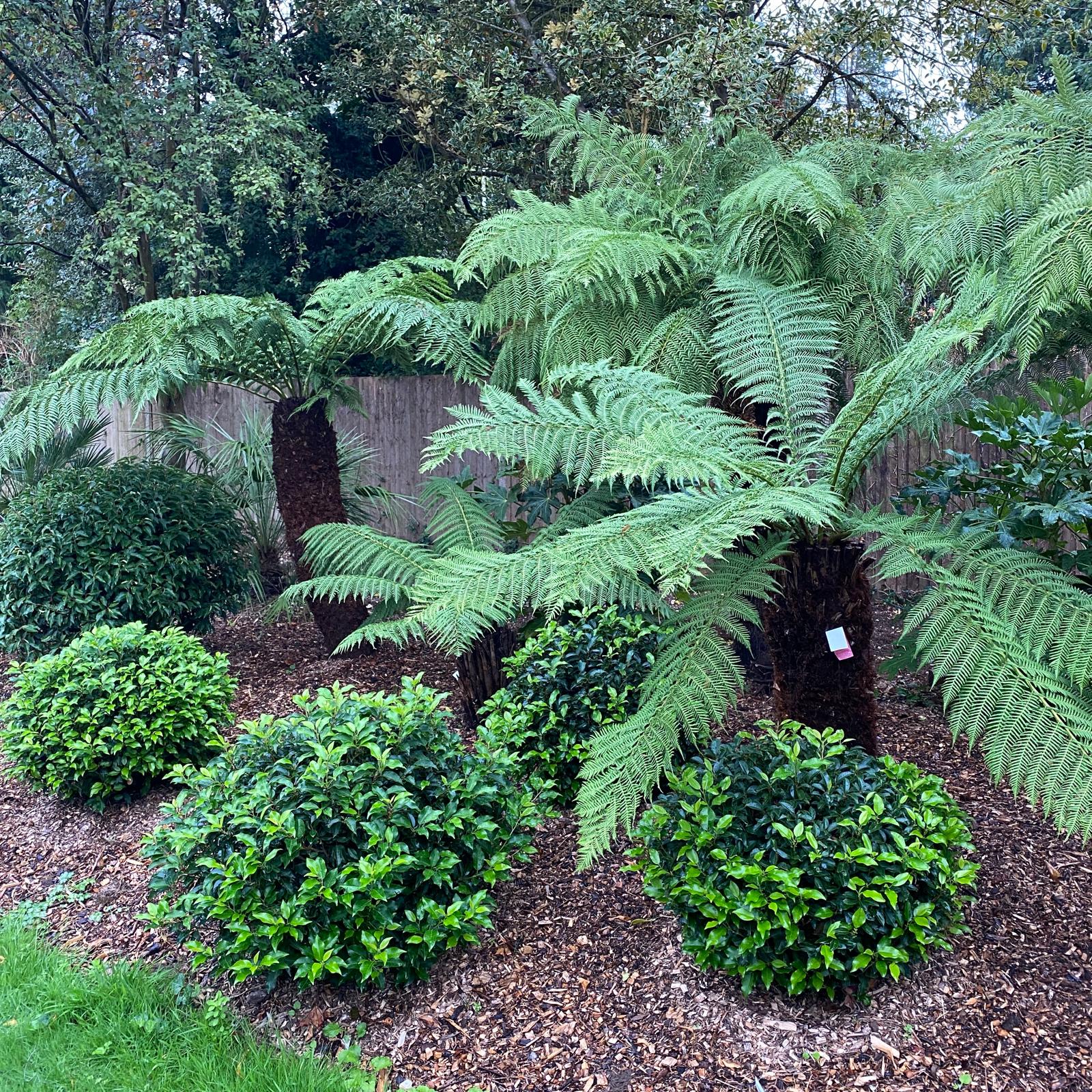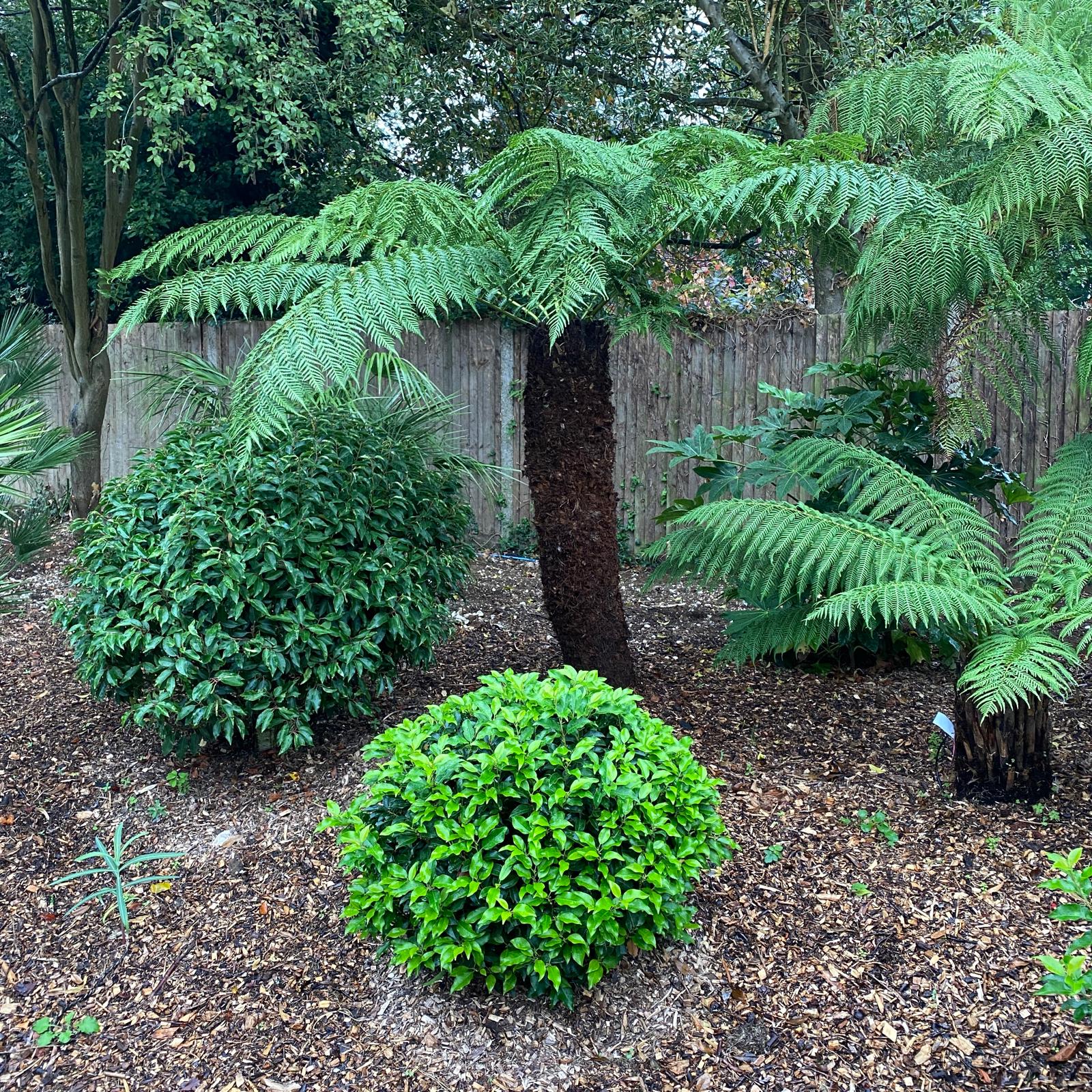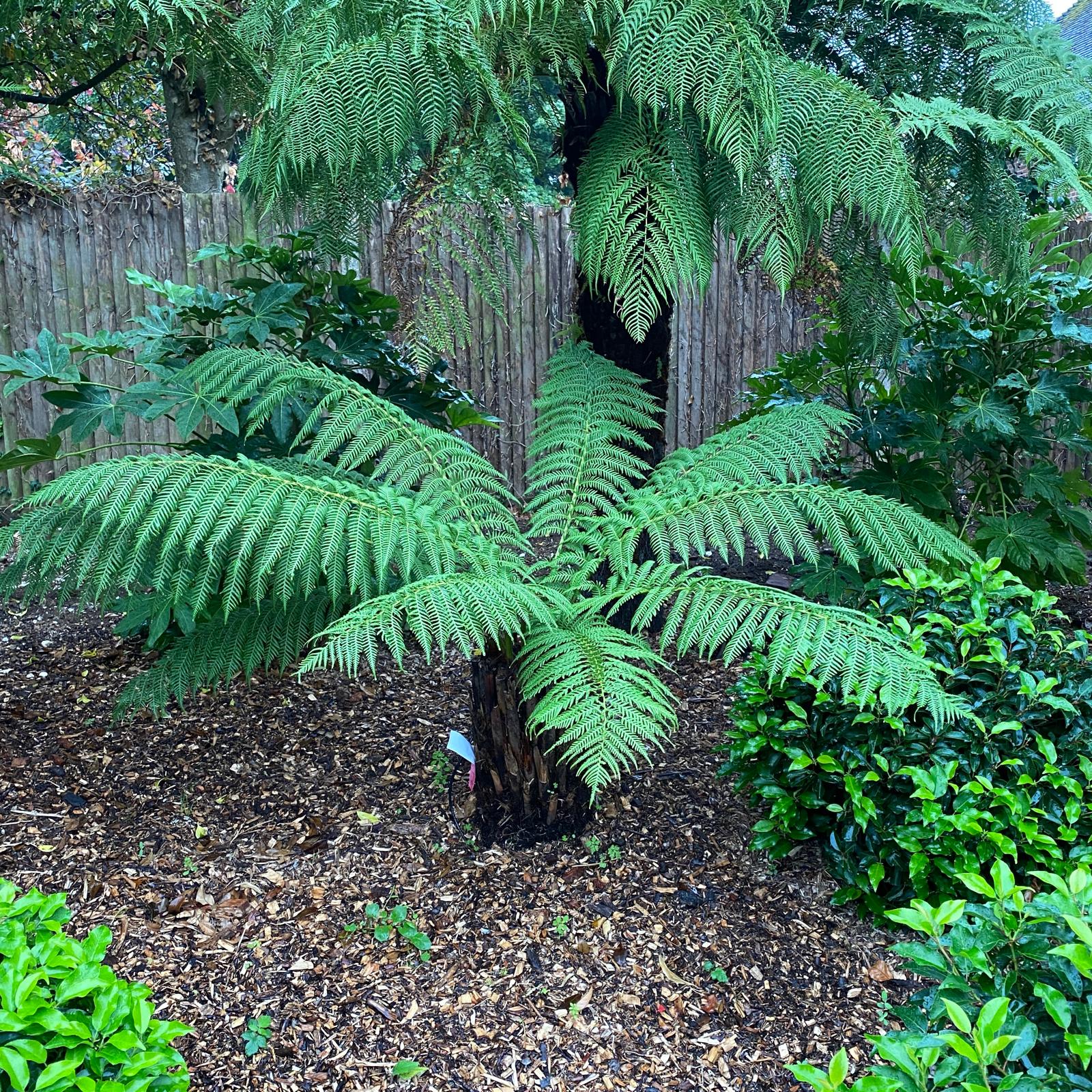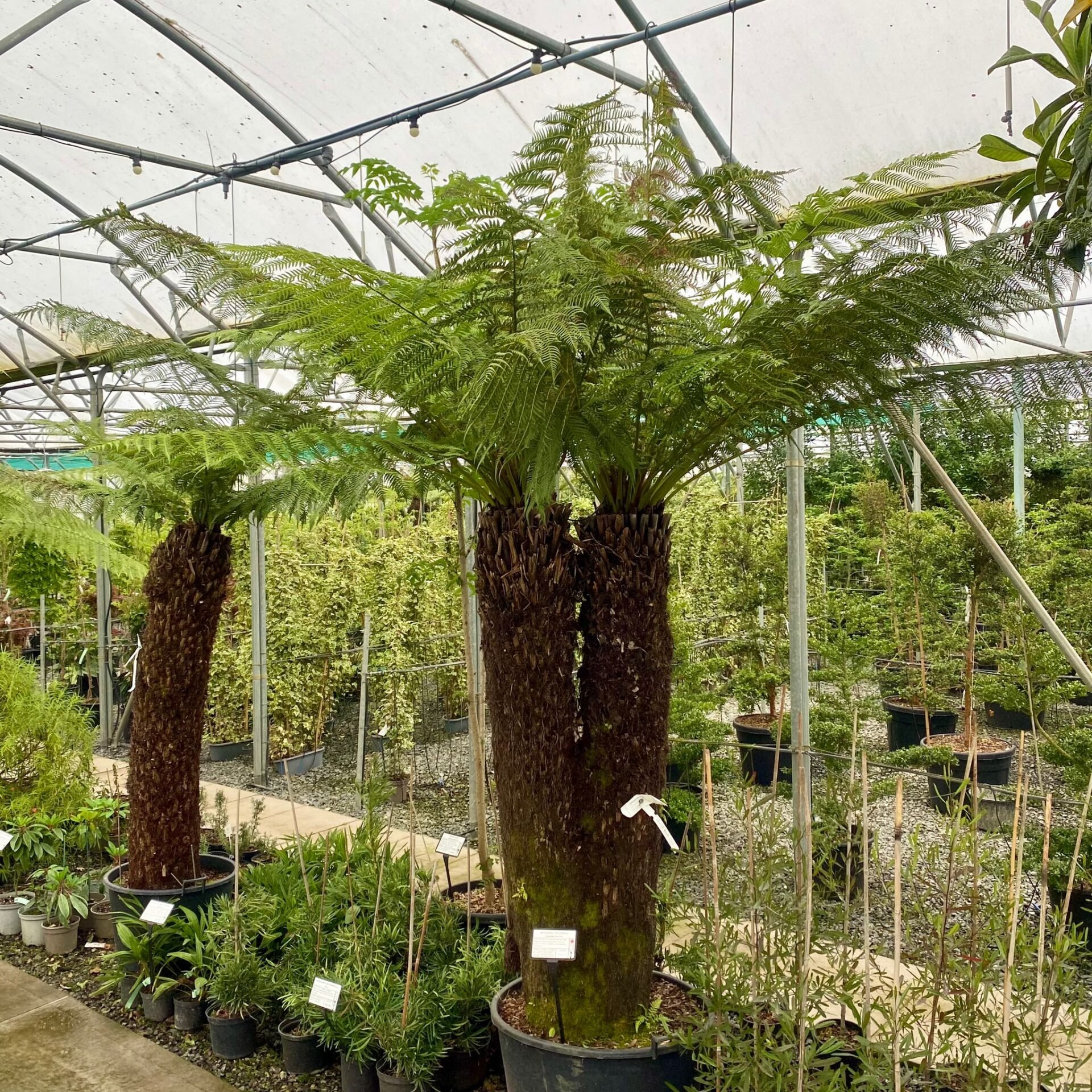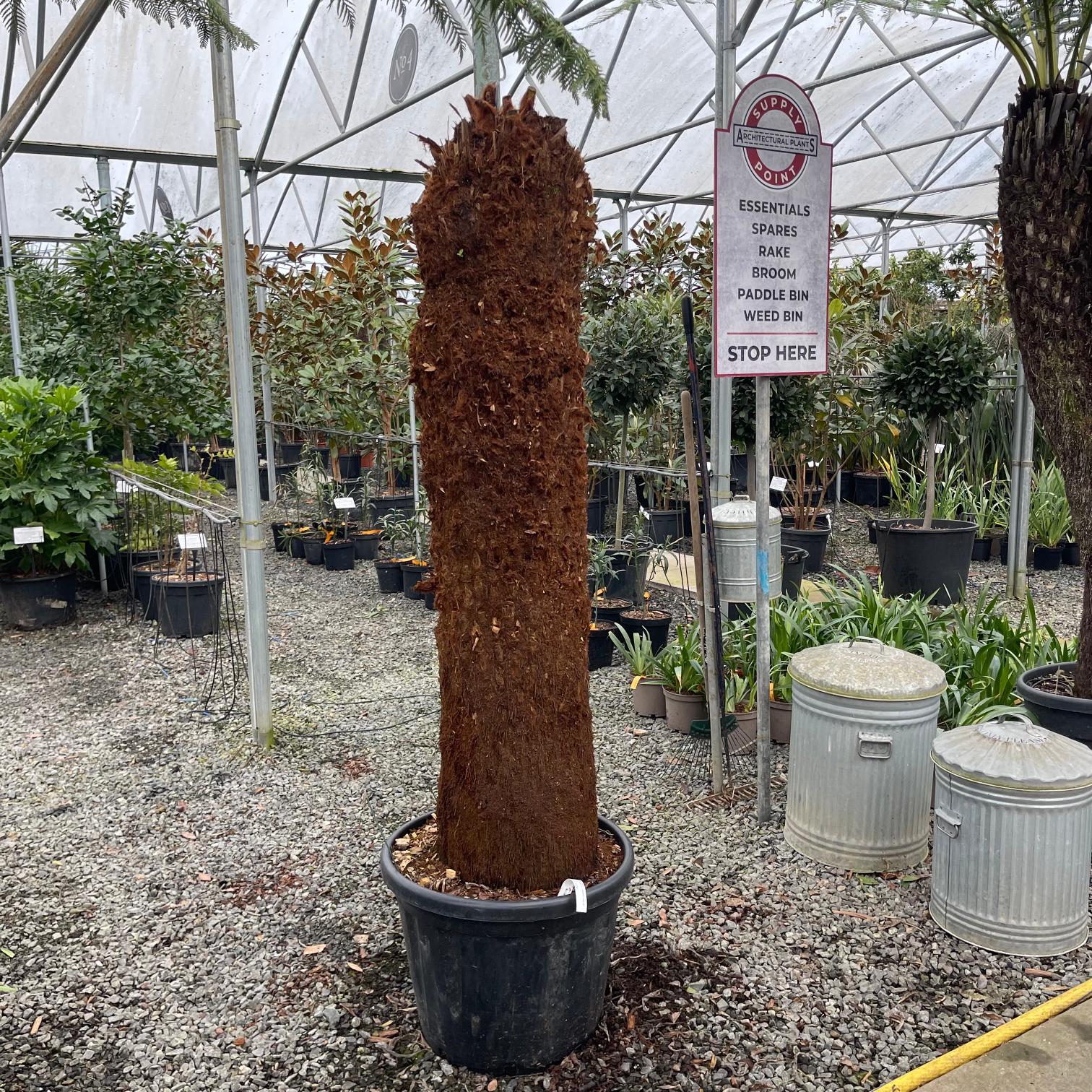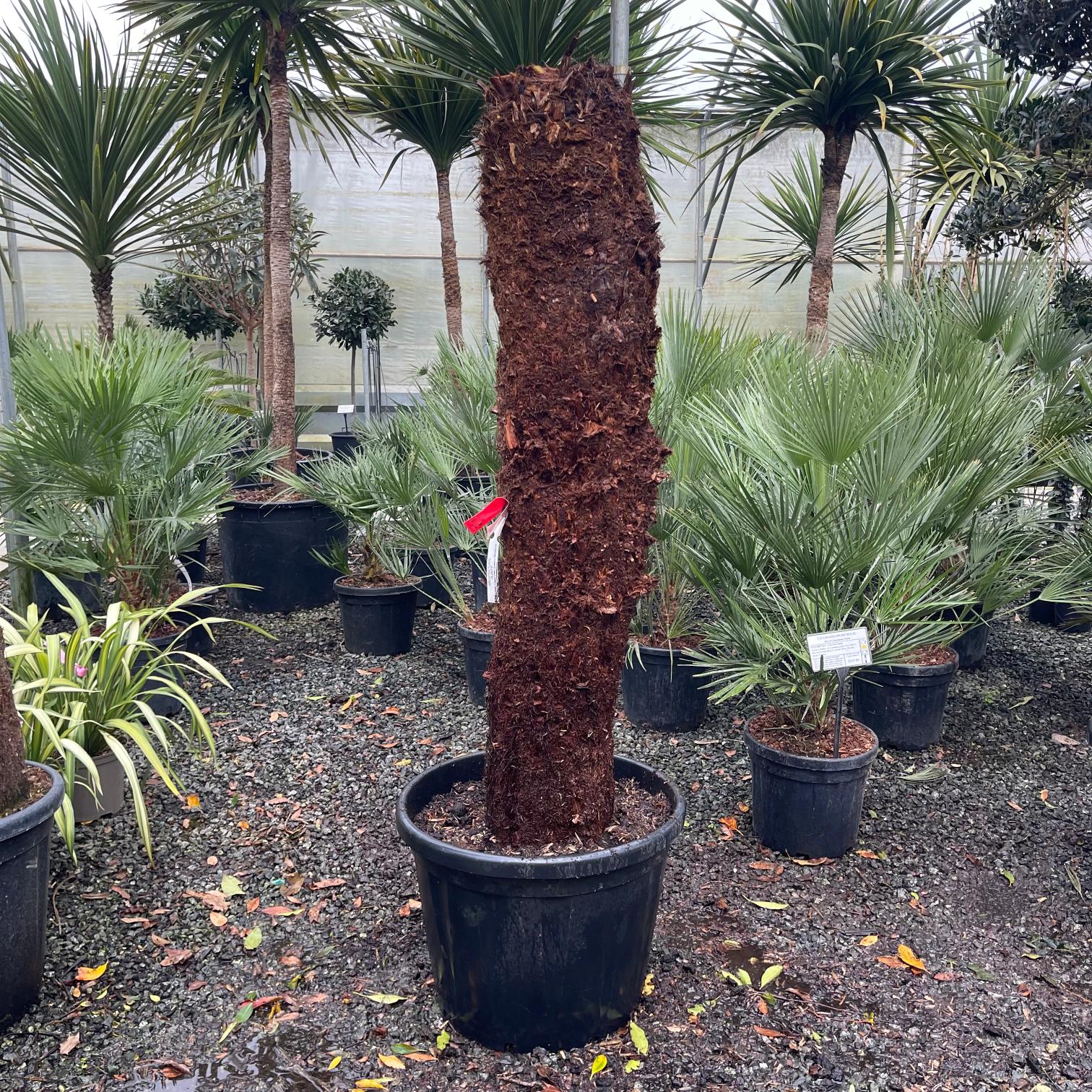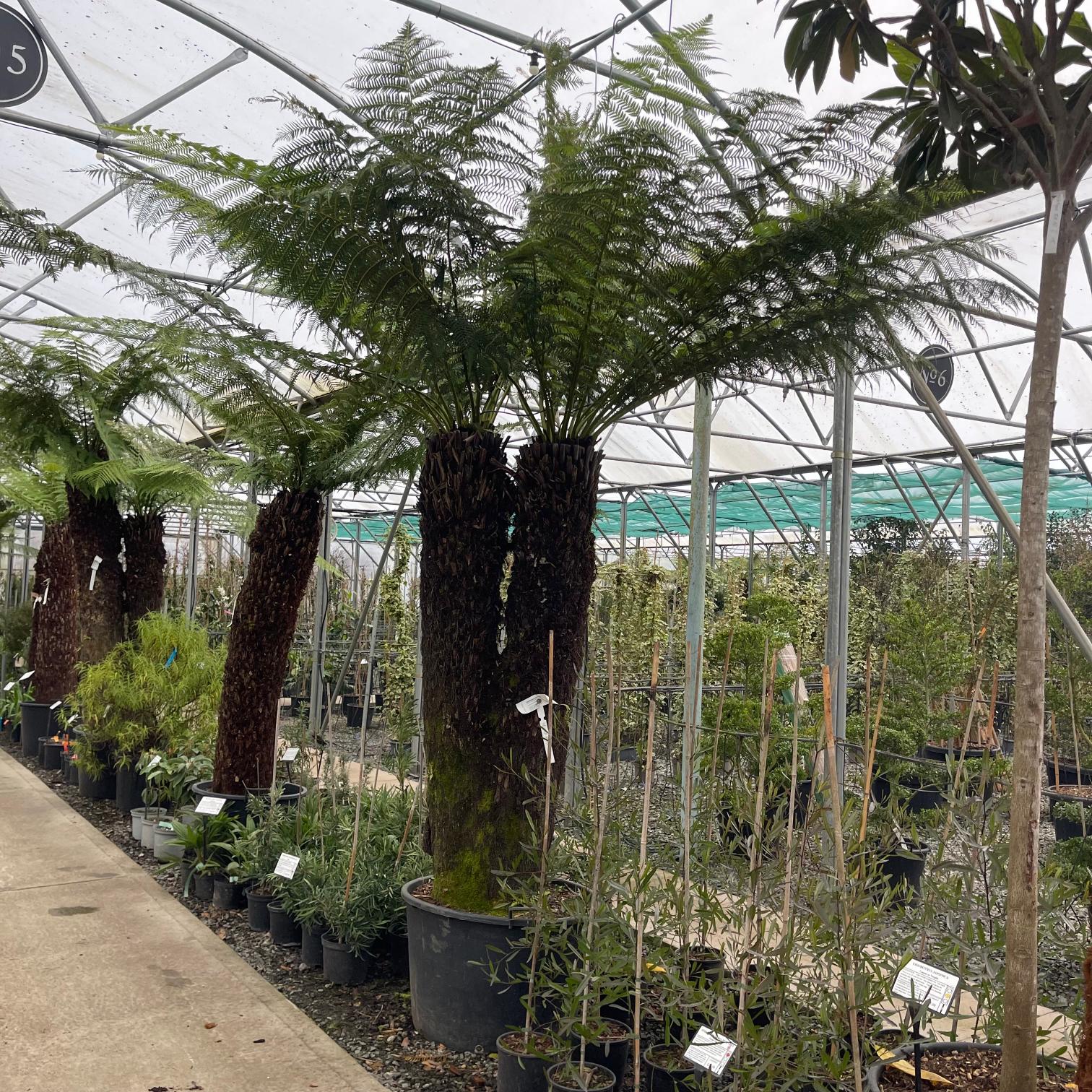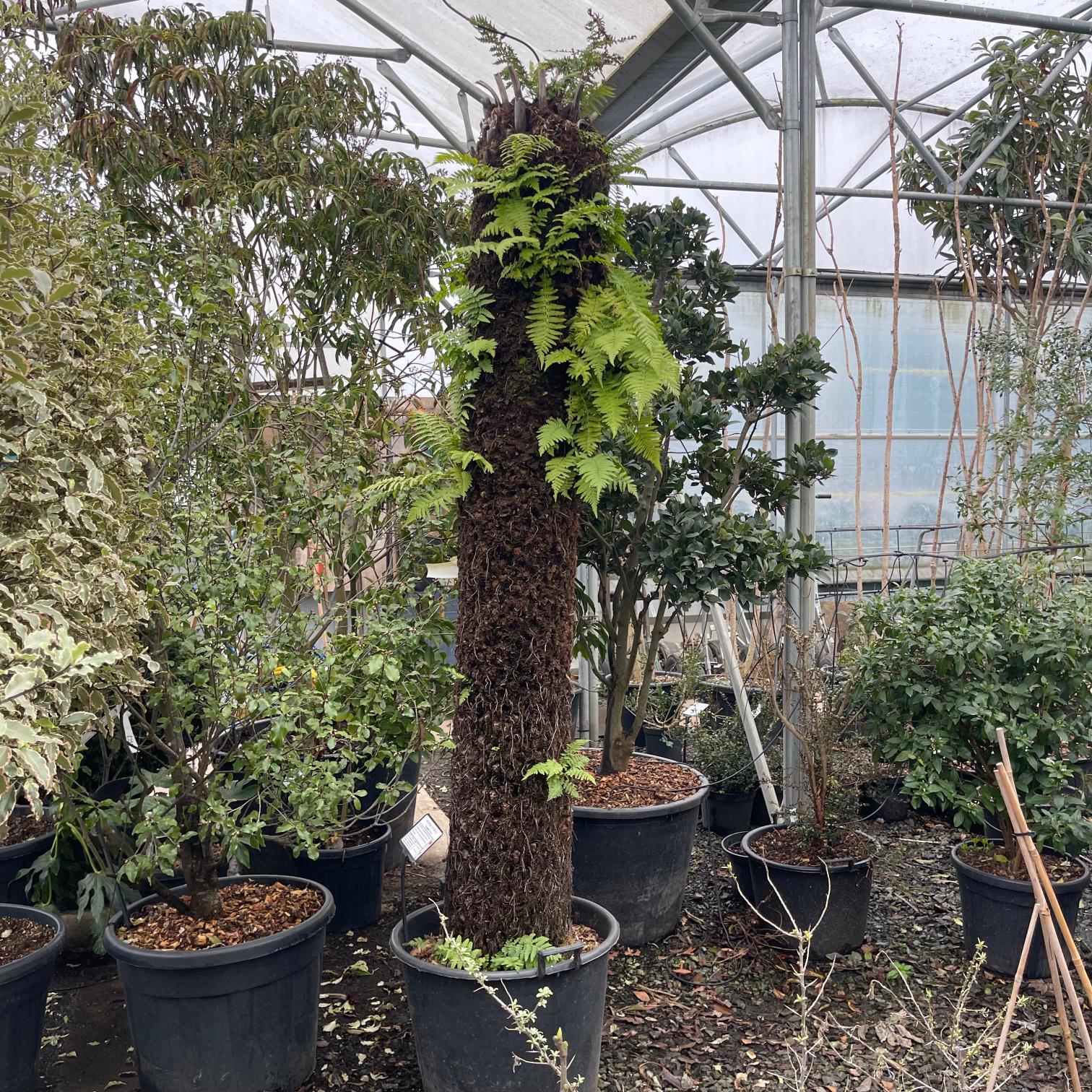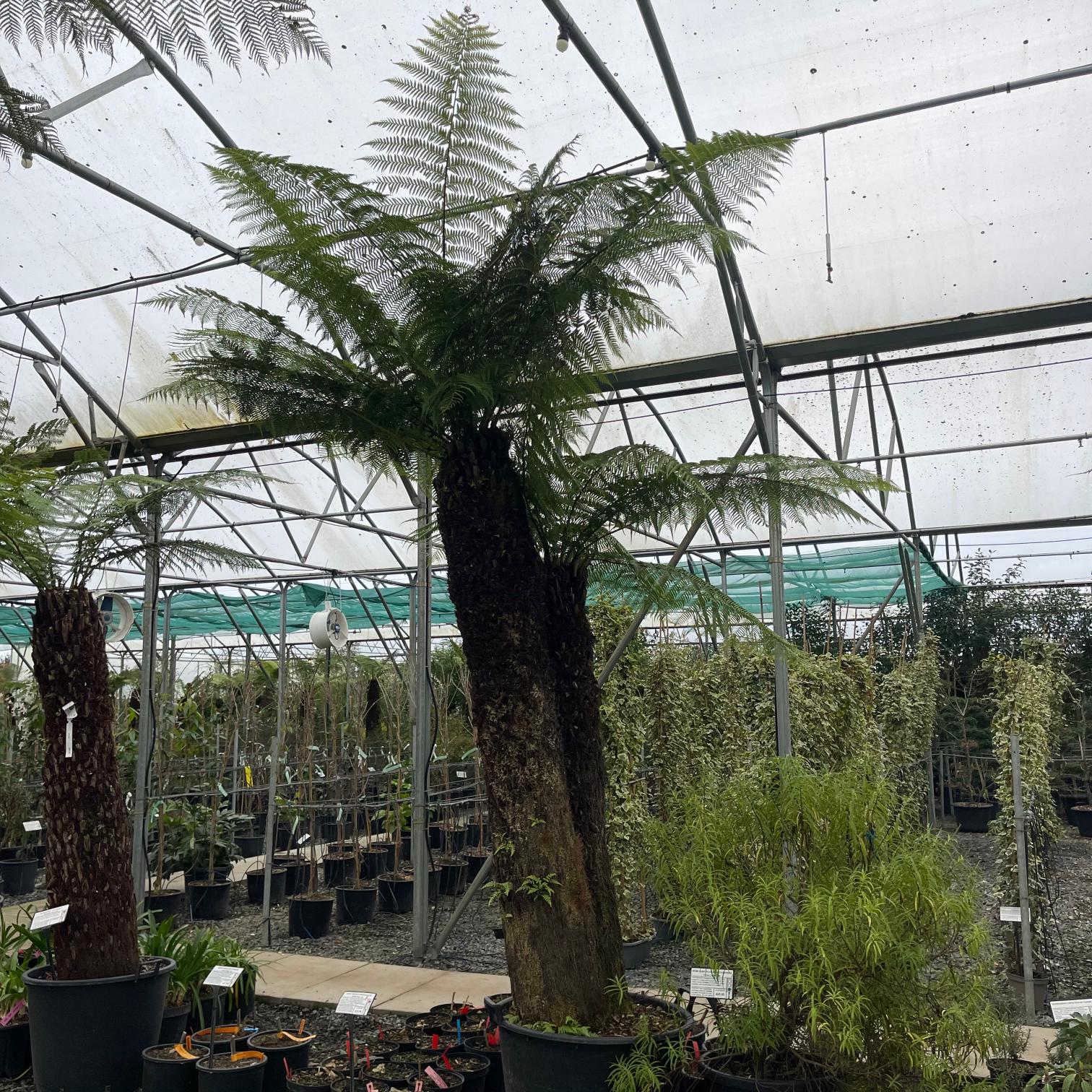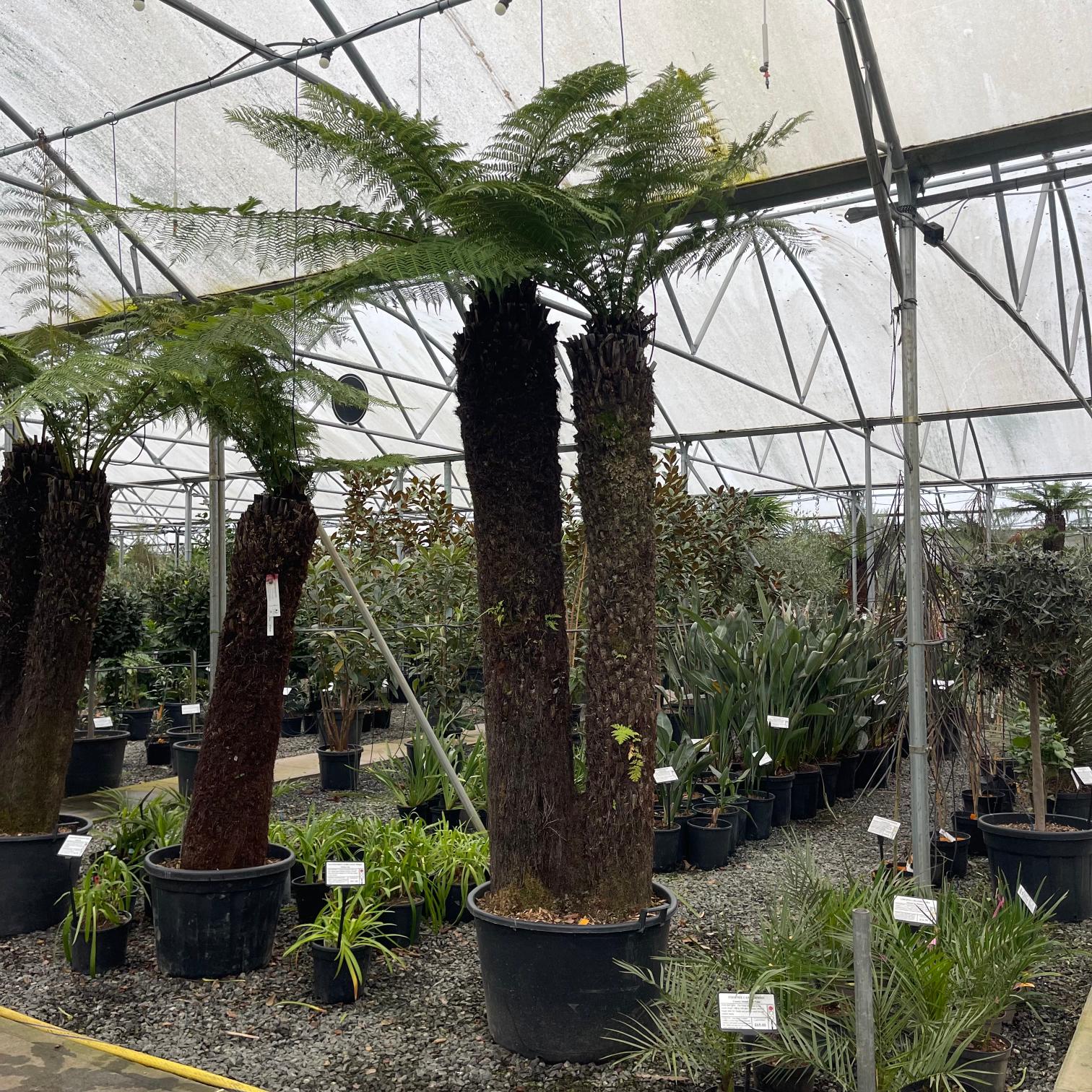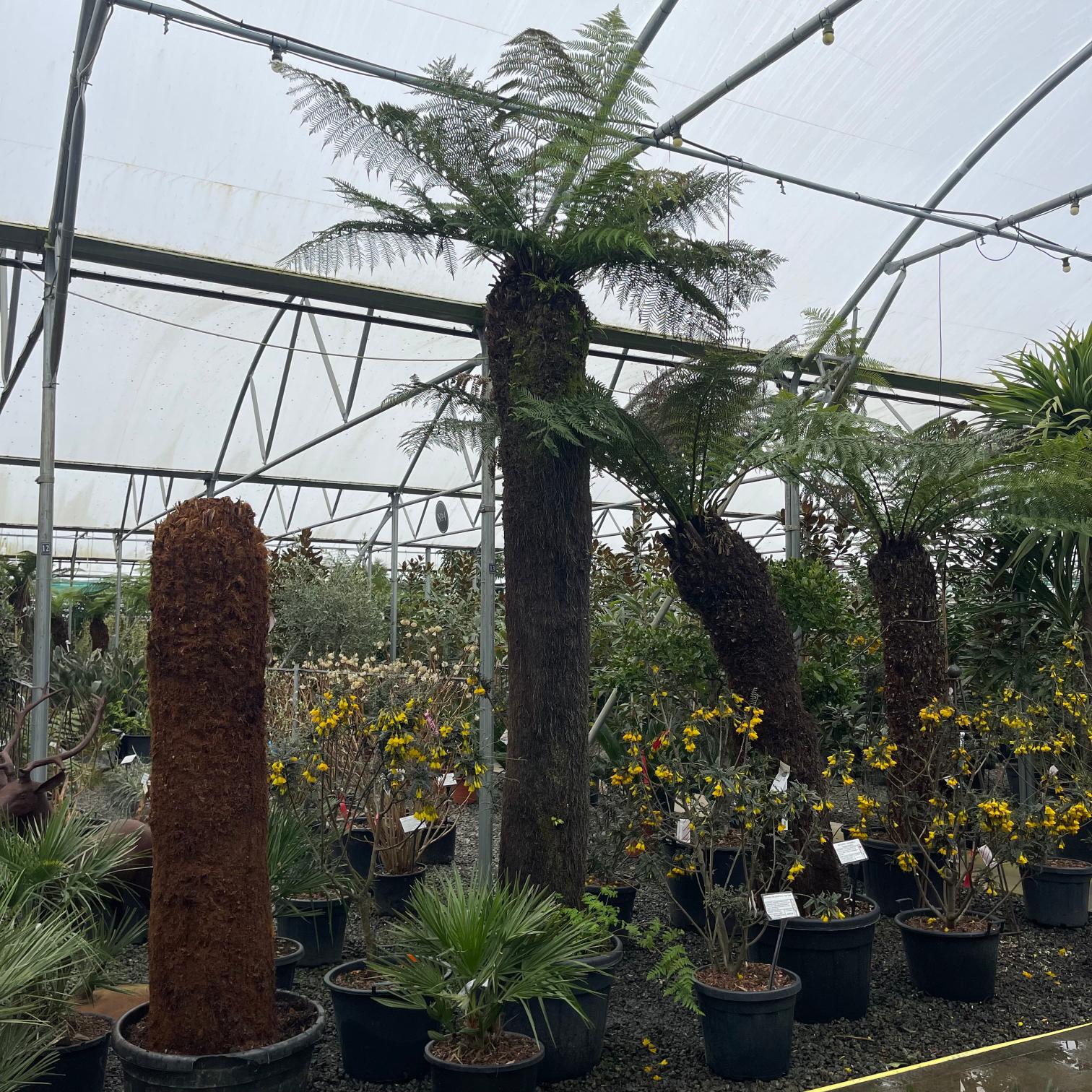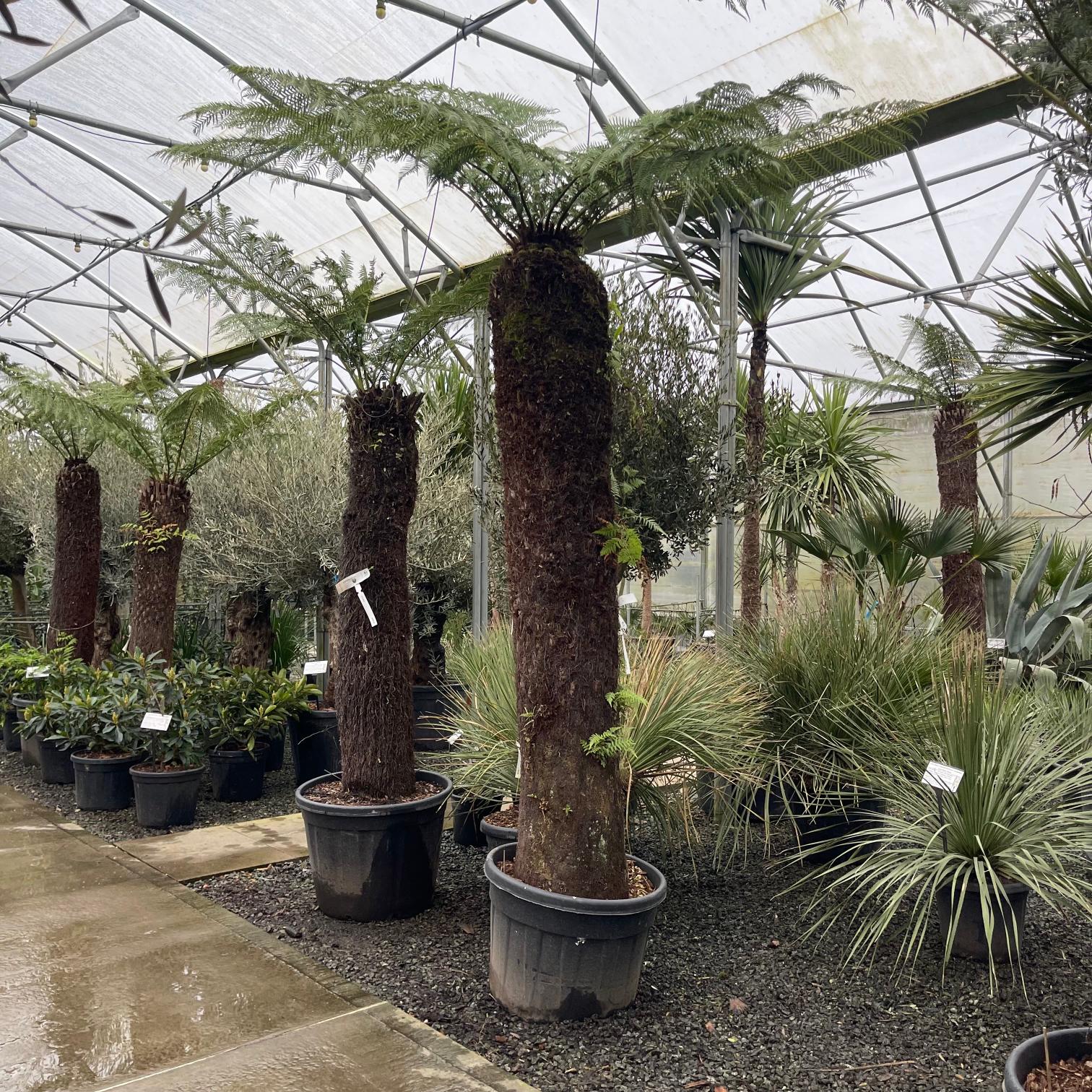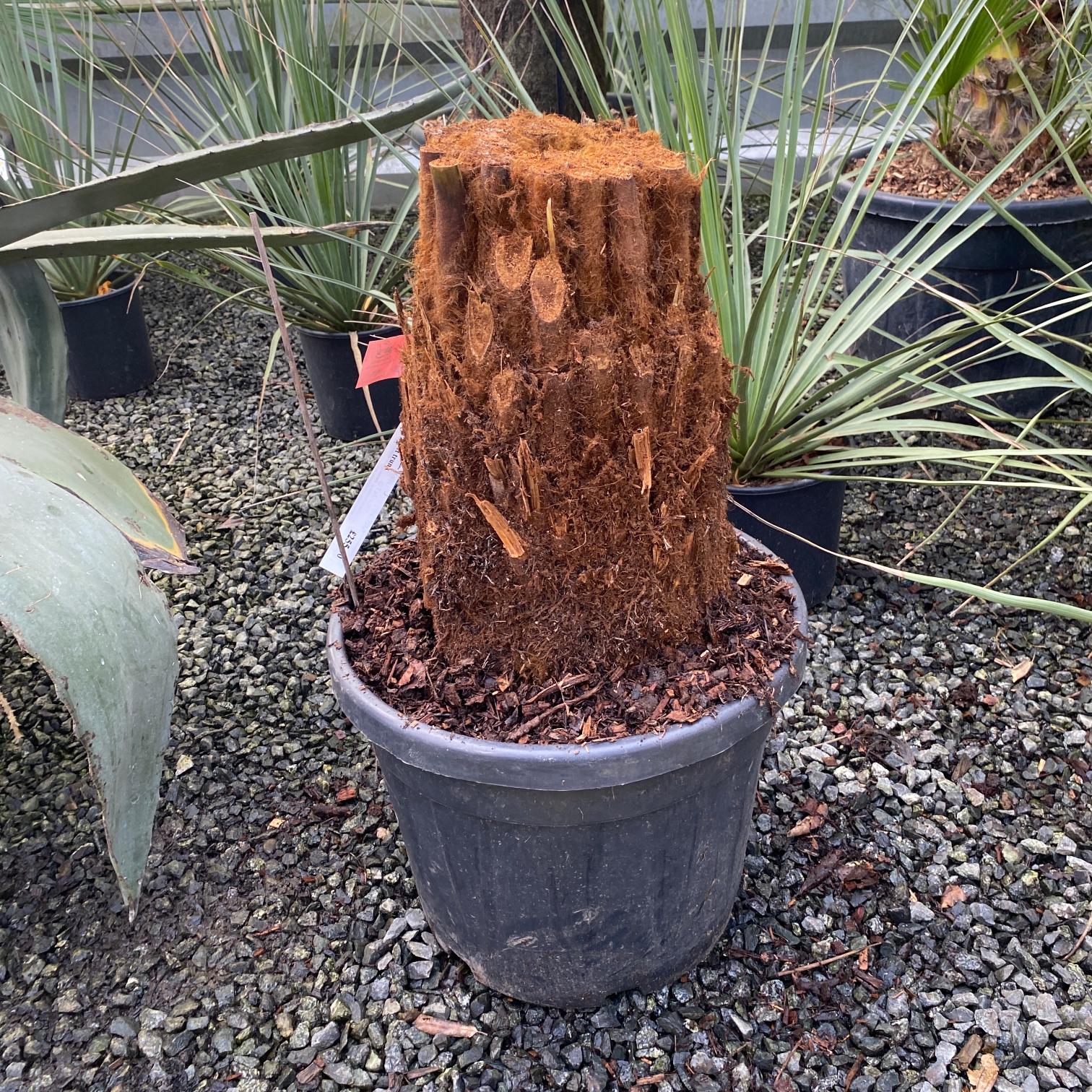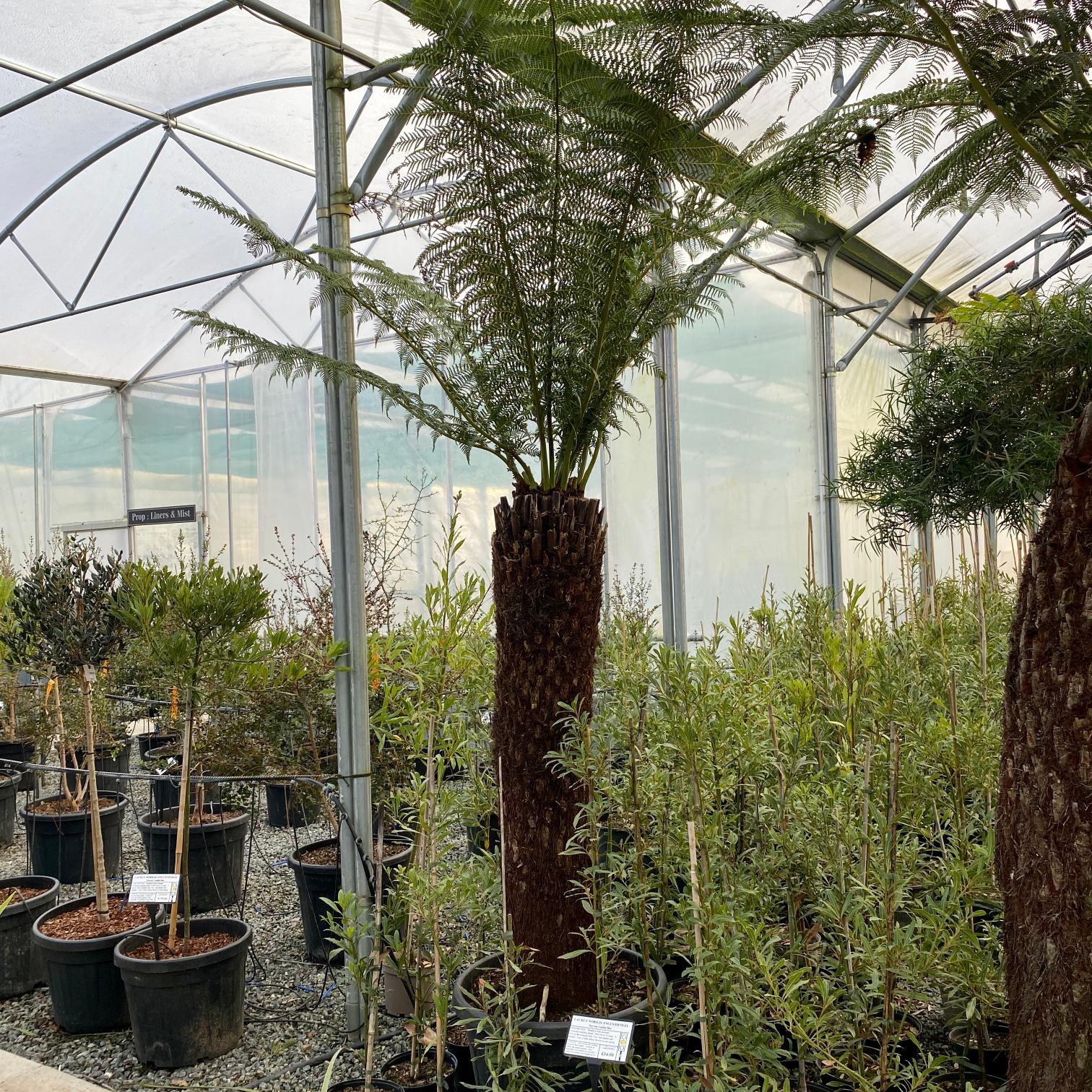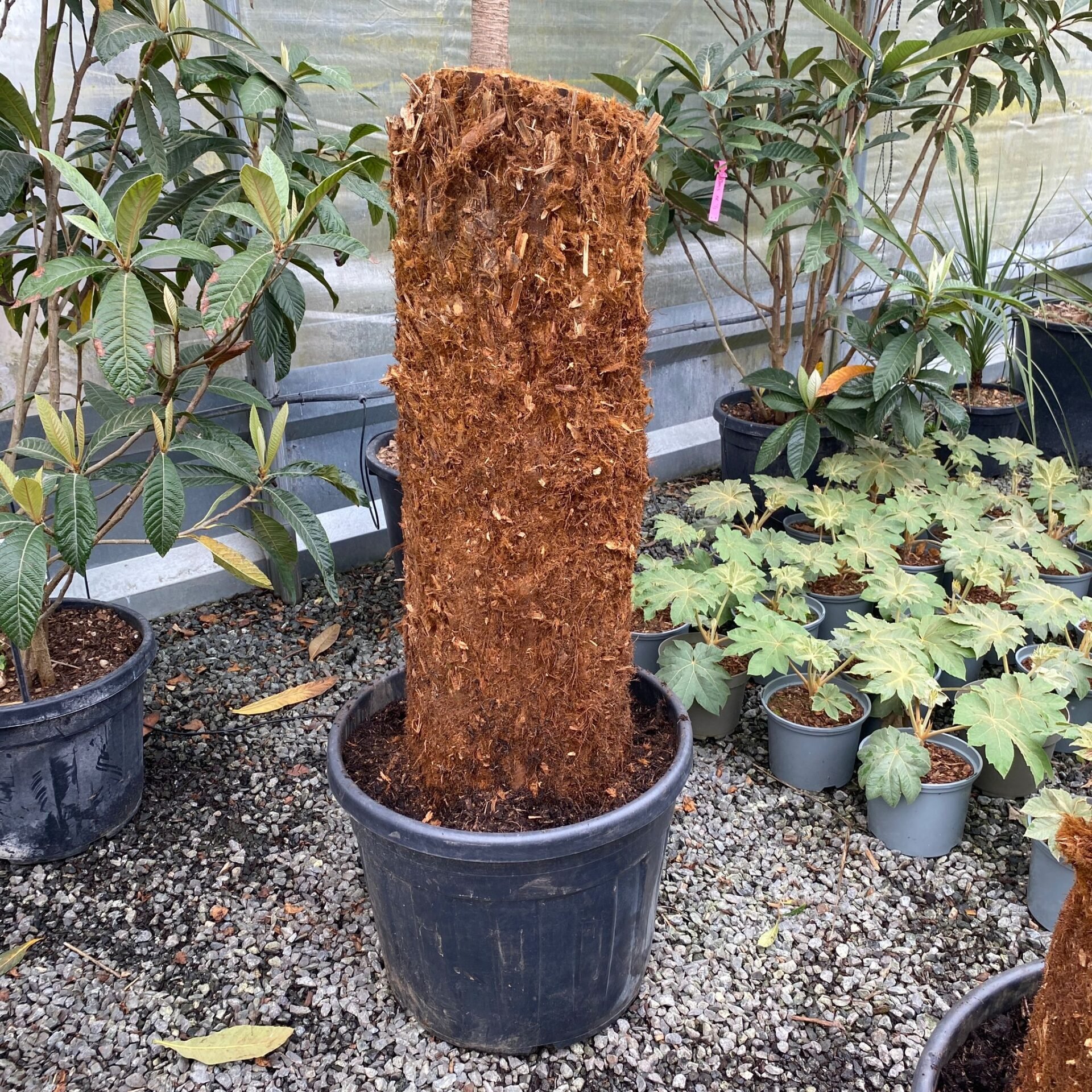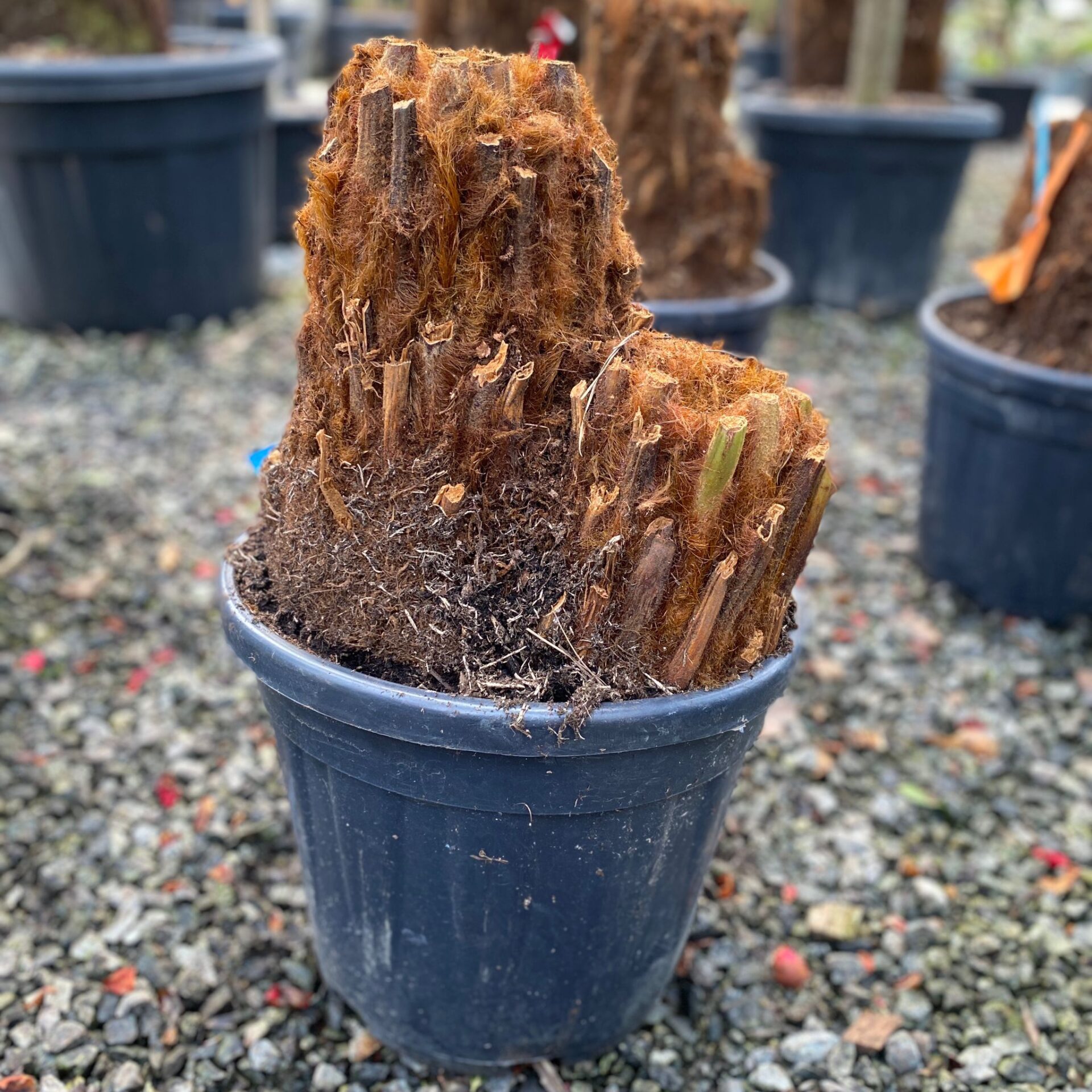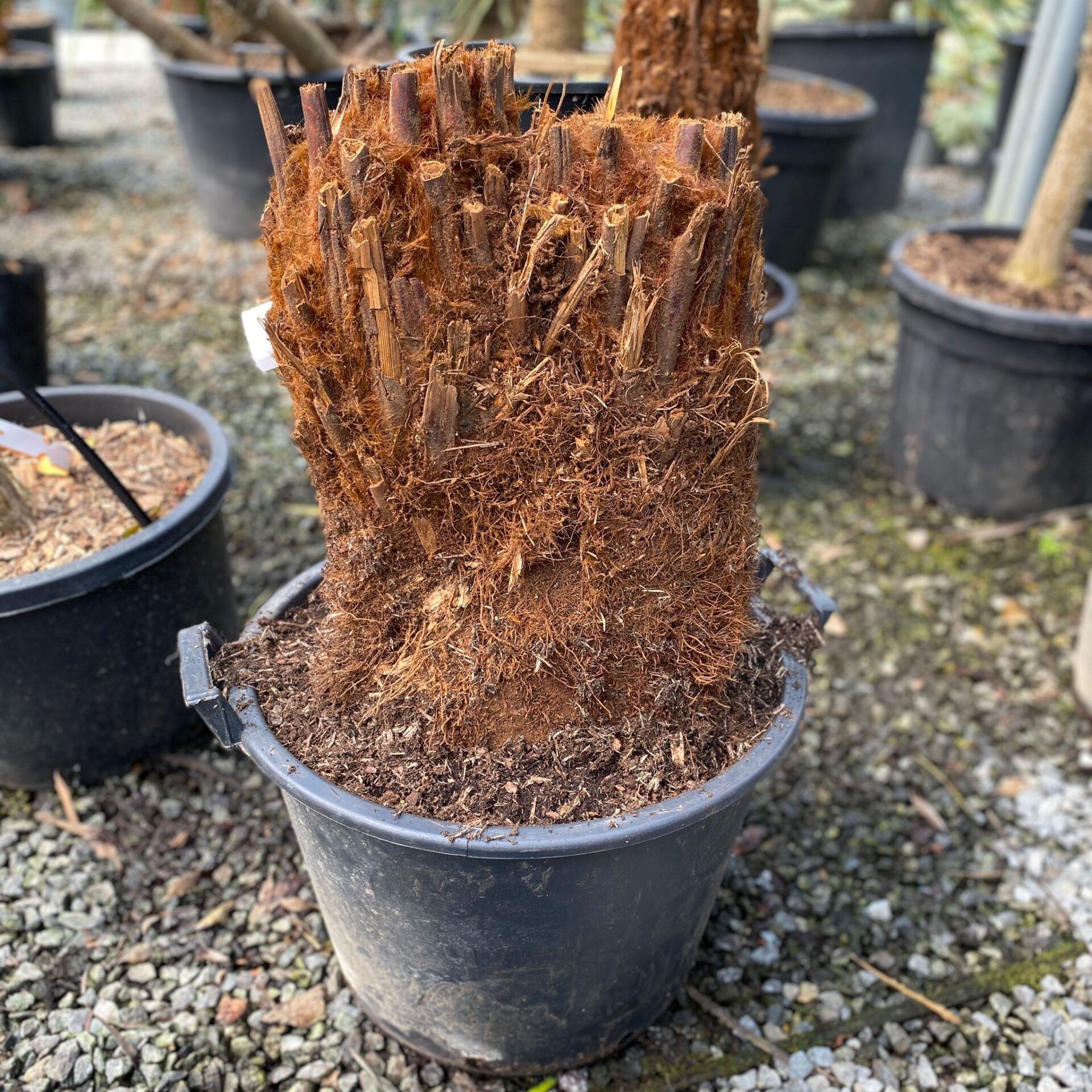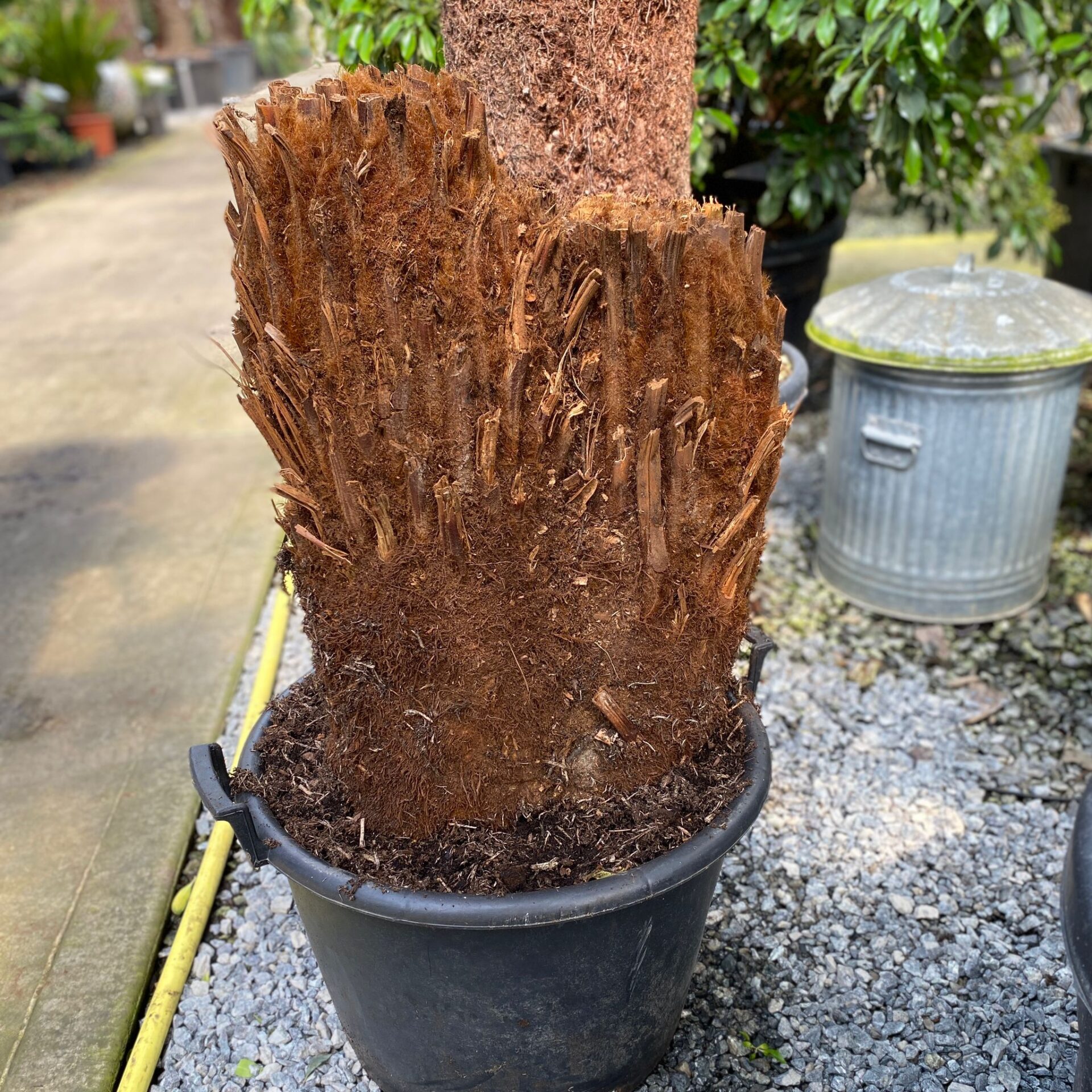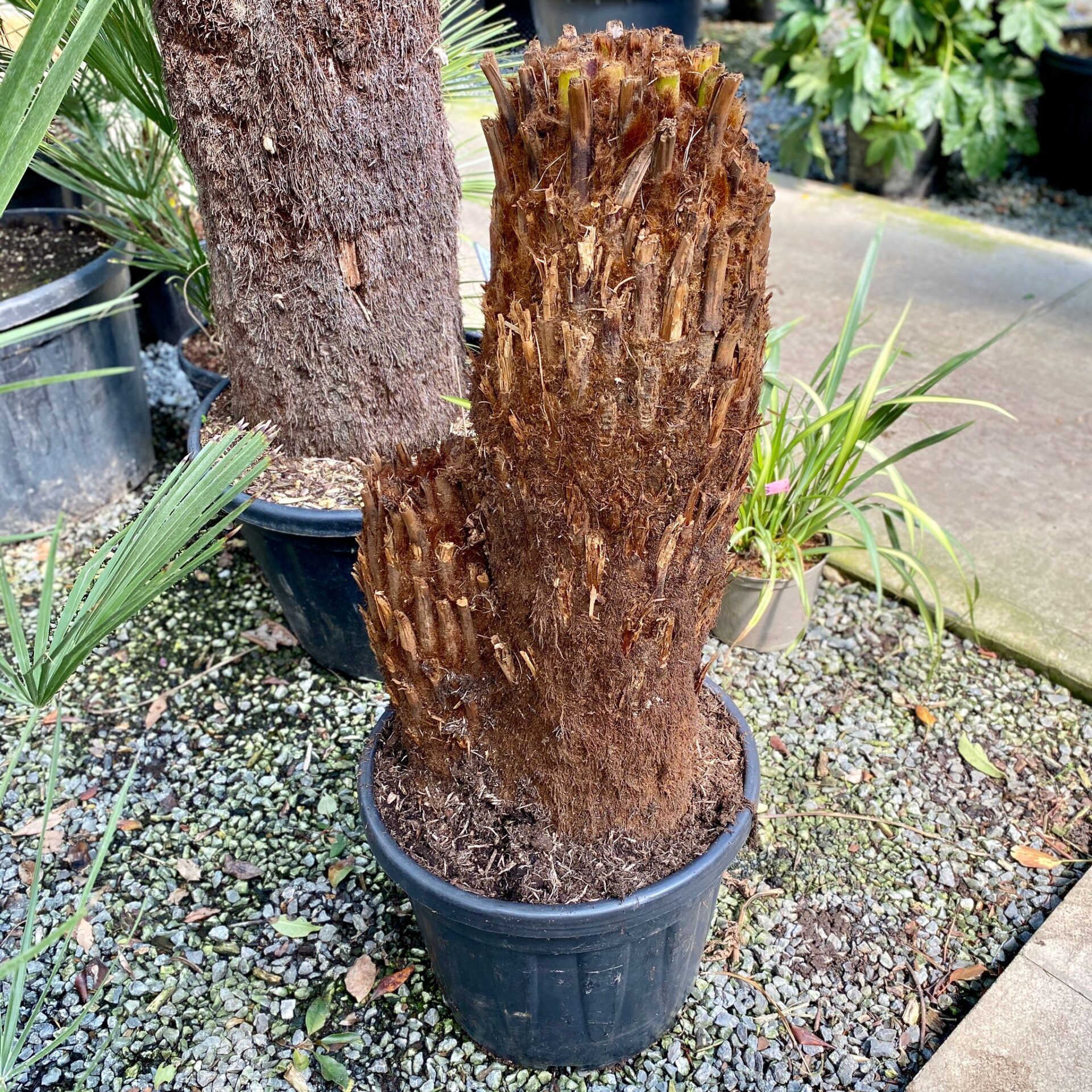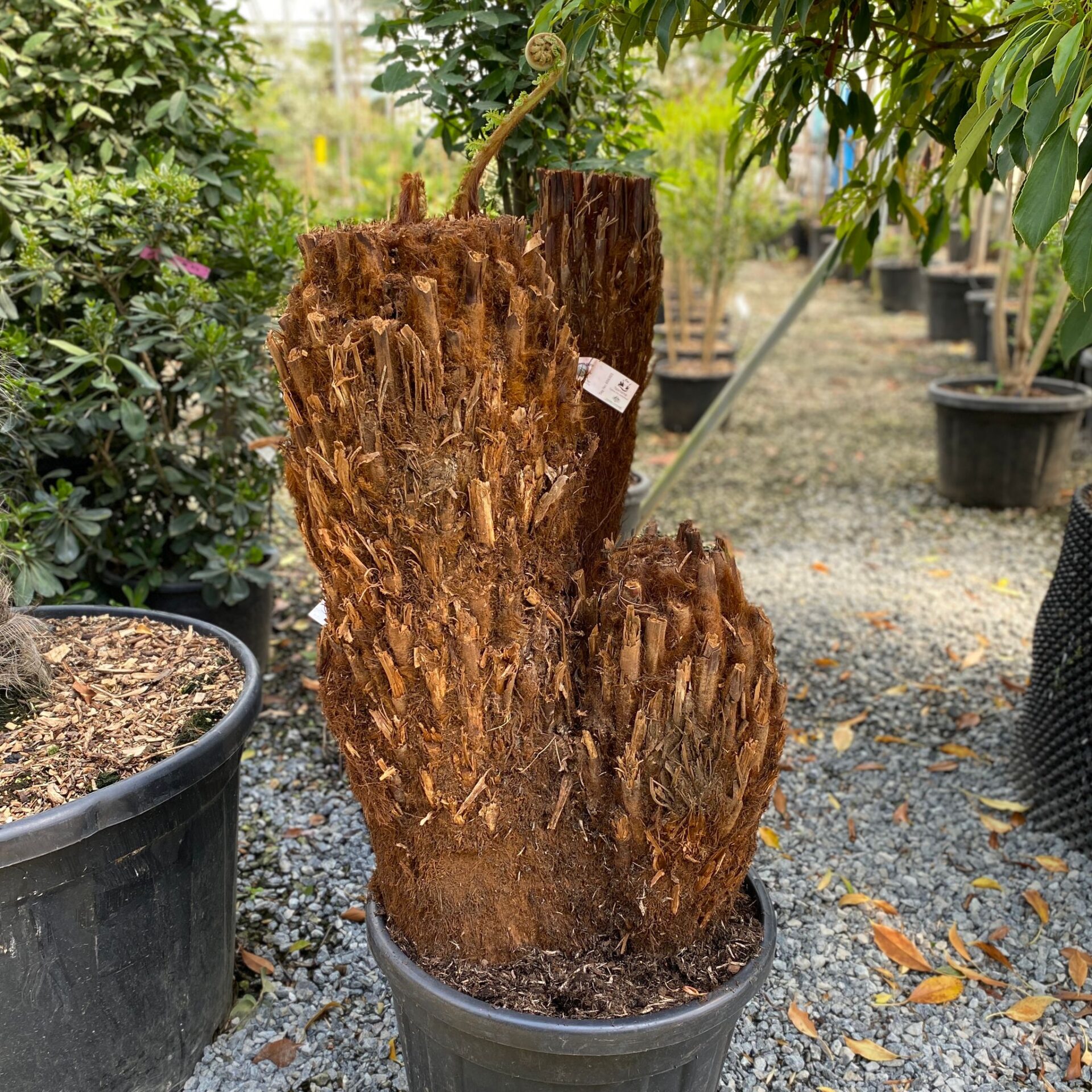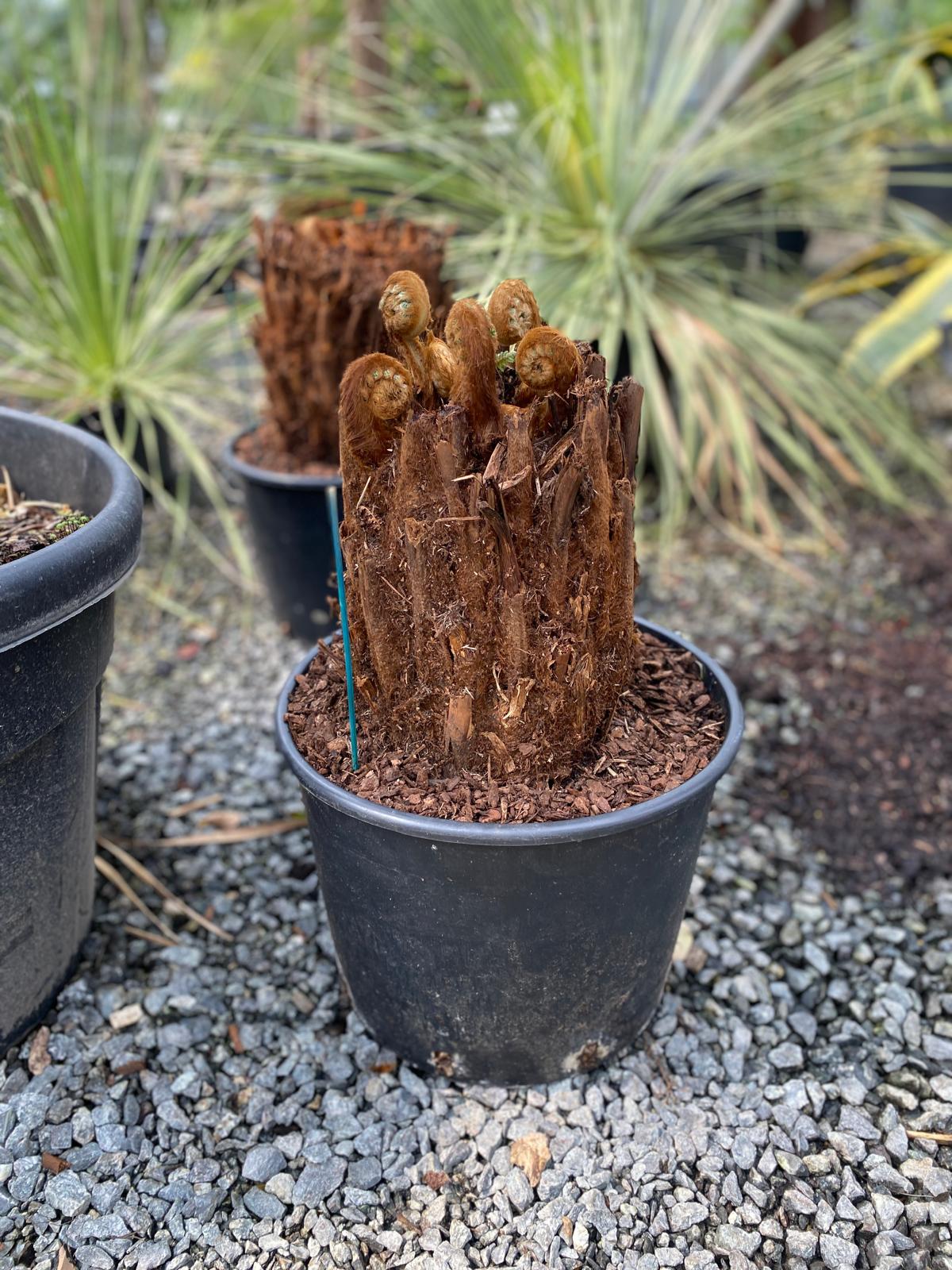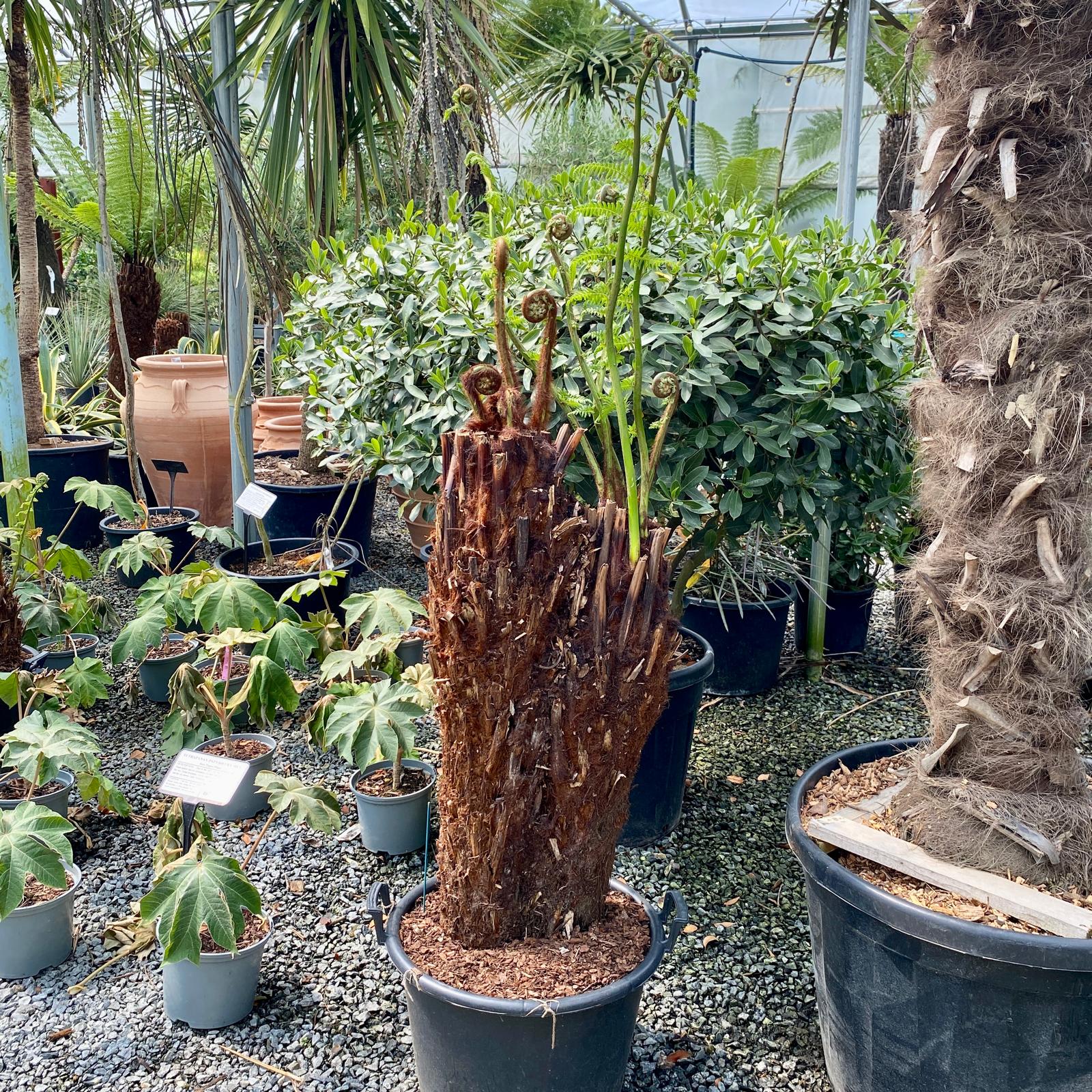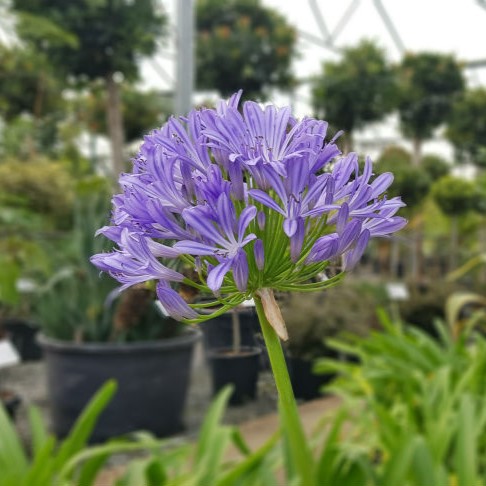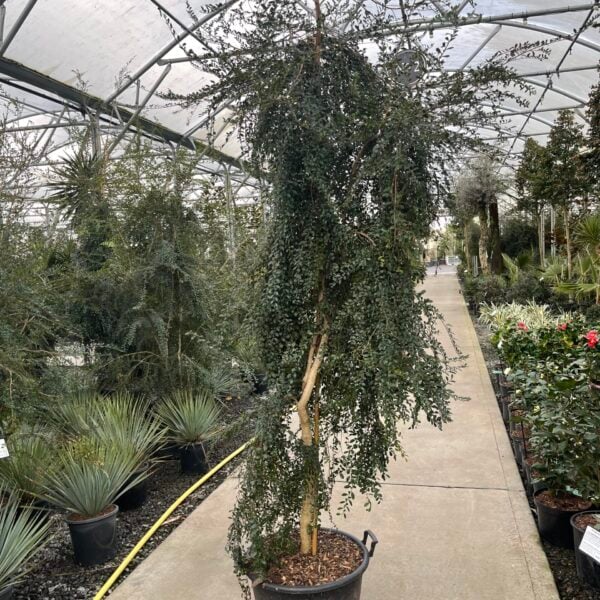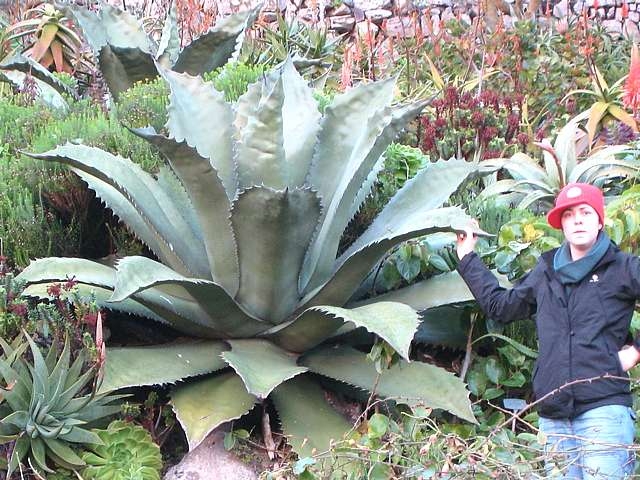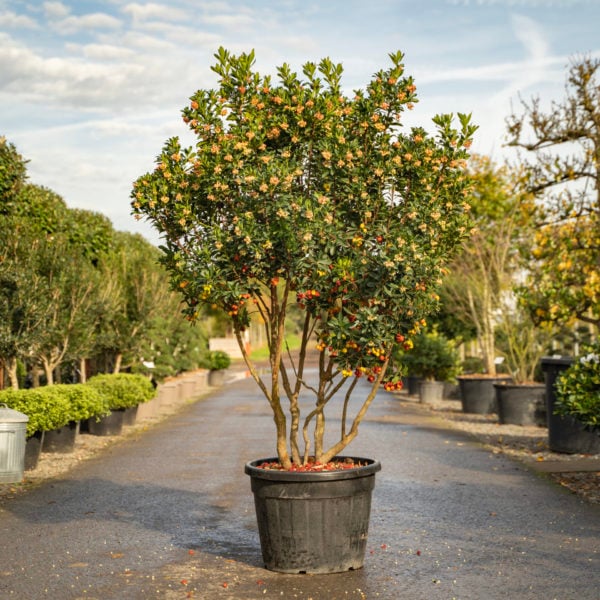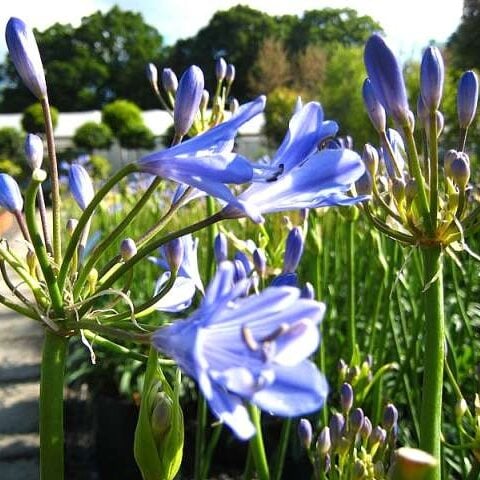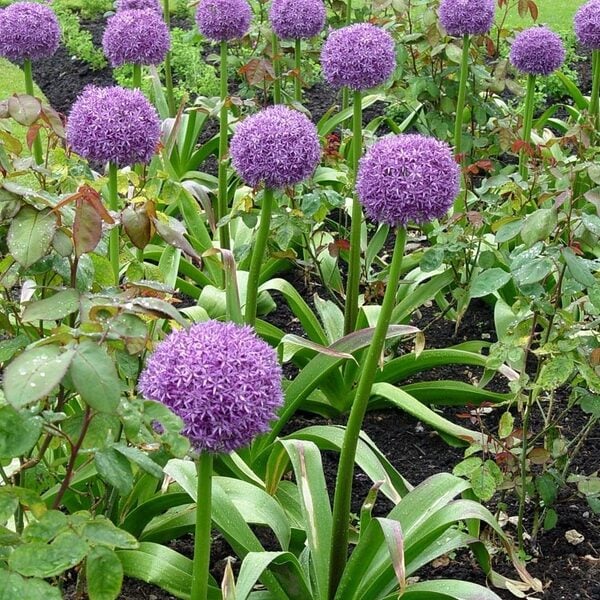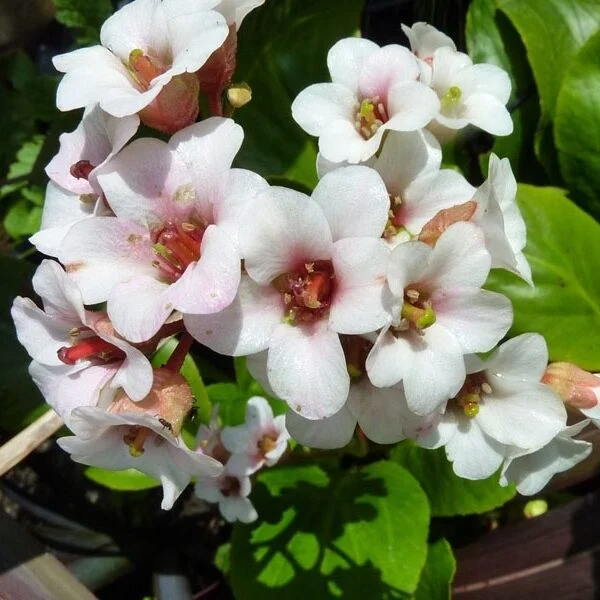Dicksonia antarctica (Tree Fern)
From 102.00 incl. VAT
Huge and beautiful tree ferns from Down Under. They need space, not too shady and a reasonably mild garden sheltered from strong winds. Everyone loves tree ferns.

Hardiness level Red
Ferns that come from south east Australia that can grow to 12ft across, are evergreen and raise themselves up on fat trunks, sometimes to 15ft or more after many years. No wonder they're called tree ferns. The trunk is all root so it's possible to cut one down with a chainsaw in Victoria, remove all the fronds, put it in a refrigerated container, send it half way round the world, bung it in a pot and let it start a new life. The idea that this can be done with utter impunity is untrue. It will notice - but given time and the right spot, it will regain its former majesty. When the base of the trunk comes into contact with moist compost, it stimulates it to produce new roots. We bring these in from Tasmania and Victoria, prop them up in pots to produce new roots and it'll often take 12 months to fill the pot with roots. We also produce our own from spores. Smaller but faster growing but without trunks.
They like a bit of shade (but not too shady - they get thin and drawn), nice organic soil (which all ferns like) and humidity. People are often surprised that tree ferns grow happily in Los Angeles where it hardly ever rains. The answer is the Pacific ocean. It might not rain much but the ocean makes coastal areas humid enough to keep tree ferns happy. They also like space to show off their symmetrical loveliness. The view from above is unsurpassable. The face that plants show to the sun is often their finest face. In the case of tree ferns, this is undoubtedly true. January 3rd 1985 is when it all started. I visited the Temperate House at Kew Gardens - at a time when I was beginning to develop an obsession with plants - and found a clump of these plants. I never knew such things existed. I ascended the spiral stairs and gazed down in awe upon this heavenly collection of symmetrical rosettes. I think I've been in a trance ever since. The label told me all about them and that there were gardens in south west Scotland where they grew outside. Maybe that was the day that Architectural Plants was born.
Much piffle is spoken on the subject of these plants since their importation from Australia in the mid 1990s. First is about their hardiness. This is a plant whose geographical distribution reaches from central Tasmania to southern Queensland. Within their DNA, there are more and less frost tolerant genes. After a very cold winter, it would appear that this hardiness varies from plant to plant (some are dead, some are not) but there's absolutely no way of anticipating which ones are hardy and which ones are not - until it's too late. This is why we will always put a red label on it. If your garden's too cold, wrap them up in the winter. Yards and yards of horticultural fleece or hessian will do the job. Second is that Dicksonias don't have roots. Someone once told me they'd planted them in wet concrete because they don't have roots. All plants have roots. When they're accused of this, I admit to quite enjoying taking a small plant out of its pot, pointing to the roots and asking "What's that then? A plate of ham and eggs?"
The rate of growth varies enormously - according to microclimate and soil conditions. An okay Dicksonia will produce a new rosette of fronds in the spring and then stop growing until the following spring. A happy Dicksonia will do the same but then just carry on chucking out new fronds at an extraordinary rate. The idea that these grow very slowly - especially when young - is untrue. Give them the right conditions and they rip. In 1990 we sent some tiny home grown plants in a box to Philip Brown at Portmeirion - very protected by trees but right on the Atlantic coast in North Wales. I visited two years later and couldn't believe my eyes. They were all 12ft across with 1ft trunks. Quite a revelation.
When new fronds are emerging (this goes for Cycads and one or two other plants) - if they're in a pot - don't move them. The plant's internal command centre is organising its fronds in a way to gain the maximum light. To us, the result is beautiful symmetry. Move the plants while the fronds are unfurling and as far as it's concerned, the sun's changed position and the fronds will twist. The result's a hopeless mess. Once all the fronds are out and settled down, then you can move the plant if you need to.
If you have a new house and a new garden (especially in an area where clay predominates), the chances are that your garden has been 're-profiled' by the developers : clay compacted by heavy machinery, then covered in a few inches of topsoil. The process of turning this into a garden will be gradual and largely accomplished by your addition of organic mulch, the bacteria that breakdown the mulch and the worms that assimilate the broken down mulch into the ground. This is a part of the process of creating soil. If this is the starting point, there are lots of things that will establish and begin the process but unfortunately, ferns are not one of them. Either grow them in a pot or wait for a few years. Ferns are fuss pots and will only grow in good friable, well drained soil with lots of organic content.
Well protected coastal gardens from west Dorset, around the Cornish peninsula and all the way to north west Scotland have these growing in profusion. Also in central London they've become common place.
For information and ideas on winter protection go to 64. Wrapping for Winter in the Glossary of Terms
Propagated by us from home grown spores if they're small (very little trunk), imported from Victoria and Tasmania if they're large (lots of trunk). Angus' useful tip for today : When small, Dicksonia antarctica could be confused with a number of our native Dryopteris ferns. Feel the fronds. Even when small they have a distinctly metallic feel to them.
Additional Information |
|
|---|---|
| Size | 1.5ft, 10ft, 1ft, 2ft, 3ft, 4ft, 5ft, 6ft, 7ft, 8ft, 9ft, Multi Stemmed 1ft & 0.5ft, Multi Stemmed 1ft & 1ft & 0.5ft, Multi Stemmed 1ft & 1ft & 0.5ft & 0.5ft, Multi Stemmed 1ft & 1ft & 1ft, Multi Stemmed 2ft & 1ft, Multi Stemmed 2ft & 2ft, Multi Stemmed 3ft & 1ft, Multi Stemmed 3ft & 2ft, Multi Stemmed 3ft & 3ft, Multi Stemmed 4ft & 2ft, Multi stemmed 6ft & 8ft, Multi stemmed 7ft & 7ft, Multi stemmed 8ft & 8ft |
| Soil Type | |
| Light | |
| Plant Type | |
| Continent of Origin | |
| Specialist Plants | |
| Situation | Coastal, Mild City Gardens, Plants for Pots, Sheltered Garden |
| Hardiness | |




